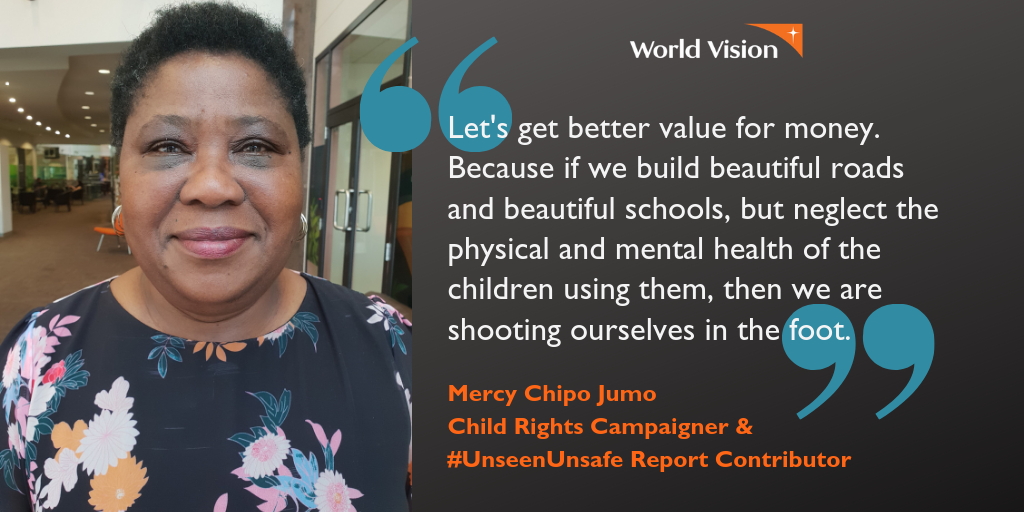Australia has been urged to increase foreign aid to support Pacific youth after a sobering new report revealed violence against children in the region has reached “epidemic” levels.
Delivered at the United Nations High Level Political Forum, the Unsafe and Unseen Report shows 4 million children across seven Pacific countries and Timor-Leste have endured violent discipline at home. Produced by Save the Children, Child Fund, Plan International, and World Vision, the report also shows 1 in 4 girls has encountered physical violence and 1 in 10 sexual violence.
The report looks extensively at rates of violence in Papua New Guinea (PNG) — Australia’s closest neighbor.
Seventy-five percent of PNG’s child population, some 2.8 million people, have experienced violent discipline at home. The study reveals 27% of parents in PNG report hitting their children “over and over as hard as they can.”
Also “exceptionally high” are rates of child sexual violence in the country. Over half of all sexual violence cases in hospitals in the capital of Port Moresby and the central Tari region were against children.
VIOLENCE AGAINST CHILDREN: Leading aid organisations @PlanAustralia, @savechildrenaus@ChildFundAU & @WorldVisionAus
— Save the Children Australia News (@SaveAusNews) July 30, 2019
urge Aust govt to dedicate more of #Pacific foreign aid budget to the prevention of violence against children #UnseenUnsafehttps://t.co/EvePkZS79r via @SBSNews
Mercy Jumo, a contributor to the report and child rights campaigner at World Vision Australia, said the drivers of violence in the region are complicated and “symptomatic of larger issues.”
“Physical violence is a socially accepted means of discipline, not just at home but at school. There is often a lack of prioritization of child protection violations by the police, which is compounded by insufficient funding and human resources to address the issue,” Jumo told Global Citizen. “Where child sexual abuse occurs, the situation is likely to be resolved at the community level within family circles. This usually results in payment of compensation by the perpetrator, meaning law enforcement authorities are never notified in the first place, or any charges get dropped.”
Kavitha Suthanthiraraj, the report’s author and acting head of policy at Save the Children, said that alongside cultural factors, issues like poverty — while not a driver of violence on its own — can aggravate and inflame family dynamics.
"Increased poverty and economic insecurity is forcing more parents into the cash economy, requiring them to move to urban centers to find work, often resulting in the neglect of children and the absence of strong family structures,” she told Global Citizen. “Further economic inequality is also linked to problems with alcohol and drug abuse which is increasing violence in the home and community.”
We urge the Australian government & other donors to urgently support key recommendations in the #UnseenUnsafe report into under-investment to #EndViolence against #children in the #Pacific region @savechildrenaus@WorldVisionAus@ChildFundAU@PlanAustraliahttps://t.co/HlJekhLzO3
— UNICEF Australia (@unicefaustralia) July 30, 2019
The impacts of violence against children are extensive.
Beyond serious physical injuries, unwanted pregnancy, mental trauma, and sexually transmitted diseases, violence can also lead to stunted brain development. According to the report, this can affect a young child’s ability to develop language, their concentration, and capacity to read and write.
The report states there has been “inadequate levels of funding” to address the issue by regional foreign donors.
Australia, in particular, spent just $1.1 million AUD on programs specifically developed to tackle violence against children in 2017 — a figure that accounts for 0.1% of all Australian foreign aid funding to the Pacific and Timor-Leste that year.
According to Suthanthiraraj, Australia’s Pacific Step Up program is proof the country is dedicated to helping develop the region. With $1.4 billion to be spent on infrastructure projects in the next 12 months under the program, Suthanthiraraj said the suggested spending increase from 0.1% to 1.5% on programs addressing child violence should be easily attainable.

Suthanthiraraj told Global Citizen it was important for Australia to now take a “holistic approach” to tackle the issue.
"Programs need to target children, families, the community, and society as a whole,” she stated. “Taking this approach we are calling on investment across programs that increase children’s resilience and ability to seek support when they are unsafe and positive training with parents to support them to better understand the impact of their actions.”
"Also, school programs that teach children about healthy relationships, community mobilization programs targeting child rights and gender equality, and response services that provide access to safe houses and counseling,” Suthanthiraraj said.
In a statement, Australia’s Department of Foreign Affairs backed its funding decisions.
According to the Australian Broadcast Corporation, the department announced upwards of $77 million had been spent on initiatives working to end violence against women in the Pacific and Timor-Leste since 2012.
"These efforts include a focus on protecting women and their children from violence and on working with communities to change attitudes around the acceptability of violence in the household,” the statement reads. "Many of Australia's development programs in the Pacific and Timor-Leste directly respond to the needs of children and address factors that contribute to child abuse, including poverty, gender inequality, and violence against women."
A further $5.4 million, the statement says, will be spent on UNICEF’s Pacific Regional Child Protection Program until 2022.